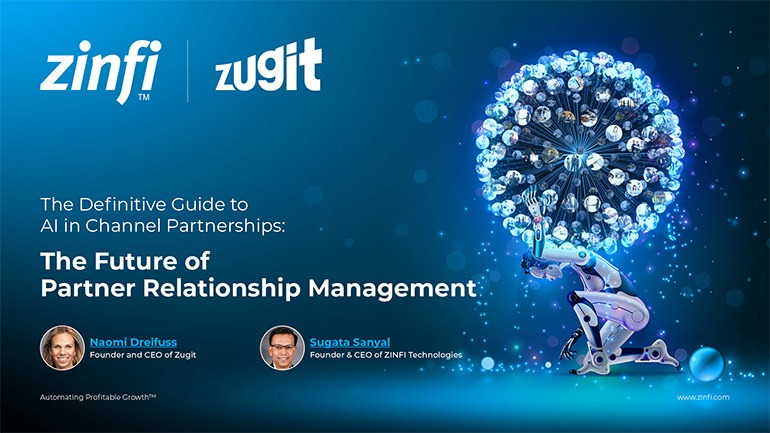Glossary - How to - Channel Marketing Strategy
How to Build a Channel Marketing Strategy?
Introduction
What Is a Channel Marketing Strategy?
A channel marketing strategy is a structured plan developed by a vendor or manufacturer to promote and sell products or services through third-party partners such as distributors, resellers, agents, or affiliates. Rather than relying solely on direct sales, a channel marketing strategy leverages a broader network of partners to expand reach, penetrate markets more effectively, and scale revenue growth.
Channel marketing typically includes tools, content, and support systems that help partners co-brand campaigns, access sales enablement materials, and align with the vendor’s go-to-market initiatives. This strategy is particularly valuable in industries where local knowledge, customer trust, and operational scalability are essential.
By optimizing channel marketing efforts, organizations can enhance partner engagement, improve brand consistency, and drive measurable results from partner-led campaigns.
Relevance in Partner Relationship Management (PRM)
In the context of Partner Relationship Management (PRM), a channel marketing strategy plays a critical role in enabling, managing, and measuring the effectiveness of a partner ecosystem. Automation tools within PRM platforms—like those offered by ZINFI’s Unified Channel Management (UCM) platform—help streamline marketing campaign creation, partner onboarding, lead tracking, and performance analysis.
When your channel marketing strategy is integrated into a PRM system, it becomes easier to scale and standardize efforts across global partner networks. PRM tools also enable vendors to deliver targeted marketing campaigns, co-branded materials, and real-time analytics, which improve decision-making and partner ROI. As a result, businesses that prioritize channel marketing within a PRM framework typically experience better partner satisfaction and higher revenue growth.
Key Takeaways:
Define Clear Channel Goals and Metrics:
Before launching any campaign, it’s essential to define channel-specific marketing goals. These could include increasing partner lead conversion, boosting brand awareness, or driving cross-sell or upsell within partner territories. Align these goals with measurable KPIs such as:
- Partner engagement rate
- Qualified leads generated
- Revenue influenced by partners
- Campaign adoption rates
A well-articulated objective ensures both your internal teams and your channel partners are aligned. It also serves as the foundation for campaign design and performance tracking. Using ZINFI’s Partner Marketing Management tools, vendors can set up dynamic dashboards that monitor these KPIs and offer real-time visibility into partner activities.
Identify and Segment Your Channel Partners:
Not all partners have the same capabilities or customer base. By segmenting partners based on size, industry, technical expertise, or geographic focus, you can tailor marketing campaigns to match their specific needs and strengths.
For example:
- Tier 1 partners may require co-branded materials and complete campaign support.
- Smaller partners might need more enablement and simplified templates.
PRM platforms enable vendors to build partner profiles and use data analytics to determine which campaigns are best suited for which segments. Segmenting partners helps personalize training content and resource allocation, improving ROI and partner satisfaction.
Develop Co-Branded Campaign Assets:
Partners are more likely to run campaigns when marketing materials are professional, ready-to-use, and customizable. Co-branded marketing assets provide a powerful way to reinforce both your brand and the partner’s credibility with their customers.
Create a library of:
- Email templates
- Landing pages
- Social media posts
- Web banners
These should be editable within a Marketing Asset Management module of your PRM platform. ZINFI’s Through-Channel Marketing Automation (TCMA) helps automate the creation and distribution of these assets, ensuring consistency and scalability.
Automate Campaign Execution:
Manual campaign deployment can limit reach and result in inconsistent execution. Use through-channel marketing automation (TCMA) to automate campaign workflows—from lead capture to nurturing sequences—across your partner network.
Key benefits include:
- Faster campaign rollout
- Consistent branding and messaging
- Reduced partner workload
Automation also allows real-time tracking of campaign performance and lead behavior, making it easier for vendors and partners to optimize outcomes. With ZINFI’s TCMA tools, vendors can launch multi-touch campaigns via email, social, and the web with minimal partner input—thereby reducing friction and increasing adoption.
Monitor, Analyze, and Optimize Results:
No channel marketing strategy is complete without a robust analytics and feedback loop. Vendors should continuously monitor
- Email open/click rates
- Landing page conversions
- Lead progression
- ROI per campaign
Analyzing these metrics helps vendors refine campaign content, adjust targeting, and improve partner support. ZINFI’s Campaign Analytics Dashboard provides partners and vendors with a unified view of campaign effectiveness, including comparative performance across partner tiers.
Encourage partners to provide qualitative feedback as well, helping you fine-tune content and support for future campaigns.
Summary of Key Takeaways:
Developing a successful channel marketing strategy requires a structured approach. Start by defining measurable goals, segmenting your partner base, and equipping them with customizable co-branded materials. Automating campaign execution through a robust TCMA platform ensures efficiency and consistency, while detailed analytics drive continuous improvement.
ZINFI’s Unified Channel Management provides a centralized solution to execute, track, and refine these strategies across global partner ecosystems. By integrating your channel marketing strategy into a PRM system, you not only improve partner satisfaction but also generate higher returns on your marketing investments.
Key Examples:
Industries to be covered:
- Automotive Manufacturing
- Consumer Electronics
- Energy Production
- Financial Services
- Food and Beverage
- Healthcare Services
- Information Technology
- Pharmaceutical Development
- Retail Industry
- Telecommunications
Would you like me to continue with detailed examples for these industries?
Conclusion:
Building an effective channel marketing strategy scales business operations through partnerships. By following a structured approach—defining goals, segmenting partners, offering co-branded assets, automating execution, and tracking performance—organizations can ensure alignment across the partner ecosystem and maximize marketing ROI.
In today’s competitive environment, vendors cannot rely on manual processes or generic campaigns. Tools like ZINFI’s Unified Channel Management platform empower vendors to deliver personalized, data-driven, and scalable marketing strategies to partners worldwide.
Moreover, channel marketing alignment with PRM platforms ensures operational efficiency, brand consistency, and higher partner engagement. As digital transformation accelerates, those who invest in integrated, automated partner marketing will stay ahead of competitors and build stronger, more resilient channel networks.
Associated Keywords:
- Through-Channel Marketing Automation
- Partner Marketing Strategy
- Channel Campaign Execution Best Practices















